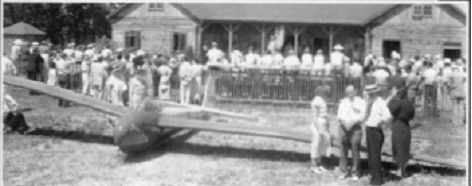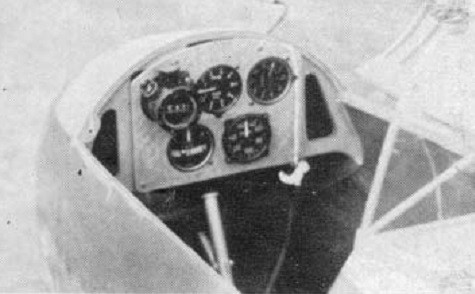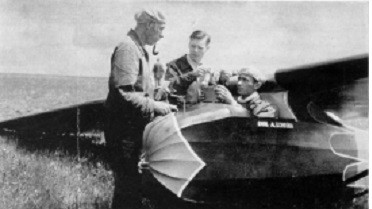Emil A. Lehecka
1982
about
( -1990) SSA Treasurer; National Competition
Awards
Evans Trophy 1938; Silver #5 1936 (Int #237)
Bio

Emil Lehecka gave a lot to soaring and he will be remembered as one of the pioneers that helped soaring grow in the thirties, forties and beyond.
He became interested in flying, gliding and soaring in 1930 at the Bowlus-Hirth Gliding School at North Beach Airport (now La Guardia Field), NY. He was such a good student that Chief Instructor Alex Dawydoff made him an instructor in spite of his being only 16 years old.
At the time Wolf Hirth made his famous soaring flight over Riverside Drive in New York City, Emil was sent to the edge of the river with a life saver just in case Hirth was unable to get back to the small field from which he had taken off.
He was one of the original members and instructor of the AirHoppers Gliding Club of Long Island City (later based at Wurtsboro Airport, NY). He bought a Baker McMillan Cadet and refinished it and used it for doing aerobatics at air shows. His specialty was inverted spins.
He also served as SSA Treasurer.
His interest in national competition may have started with the 6th National Championship which was at Elmira in 1935. The early contests were scored on distance, duration and altitude. There were days that year when the weather did not cooperate so spot landing contests were held between competition days. On July 8, Emil came in second behind Dick du Pont with a spot landing of 12 inches from the spot. During that contest he had his first aero tow and took advantage of the opportunity to tow high and demonstrate aerobatics in his Cadet on the way down. The following year, 1936, he entered the 7th Annual National Championship - again at Elmira. He placed 6th out of 45 pilots, completed his Silver "C" #5 (Intl #237) and earned prize money of $34.60. In his home area, he explored various possible soaring locations and participated in local competitions.

In 1937, he obtained a Rhoensperber sailplane and entered the 8th National Soaring Contest also at Elmira, New York, finishing second after Dick du Pont who was flying a Minimoa. The following year, 1938, although placing second after the German Peter Riedel, he became the U.S. National Champion at the 9th U.S. National Championship at Elmira flying the Rhoensperber and received the Evans Trophy. He continued performing at air shows including several at the 1939 World's Fair, and later performed at the National Air Races in Cleveland, Ohio.

During the 1938 championships, more attention was being paid to the instruments and their arrangement in the various cockpits. The photo to the right is the layout of Emil Lehecka's cockpit.
When World War II broke out, Emil did the glider test flying for Schweizer Aircraft of their TG-2 and TG-3A military training gliders. He also worked for the Pratt-Read Company, where he did the test flying on their Navy gliders. Additionally, he tested the Chase Aircraft CG-14A troop carrying glider, as well as the TG-3A built by Air Gliders.
Emil became a teacher in the Manhattan High School of Aviation Trades and had the summers off to compete in soaring contests, do aerial photography and rebuild and fly a number of vintage airplanes that included a Staggerwing Beech, a single-place Mooney, a Jensen Amphibian and a Republic Seabee Amphibian. One of the last contests that he flew in was the 1953 Nationals where he competed with his restored Martin-Jensen sailplane called the "Watsit" and placed first in Class "B".

Photo of Emil Lehecka in the cockpit of his Cadet before take-off. He flew this glider in competition but especially in several aerobatic demonstrations. Official Timer "Sully" Sullivan is giving him last minute instructions in the 1937 contest.
Adapted from Paul Schweizer's Memorial to Emil Lehecka in the January 1991 issue of Soaring magazine, page 12.